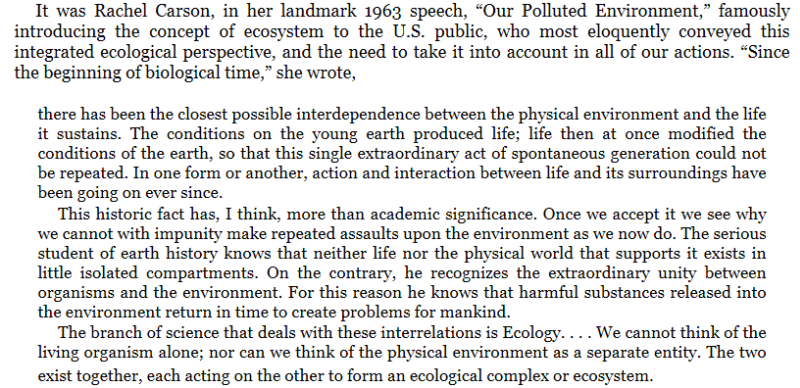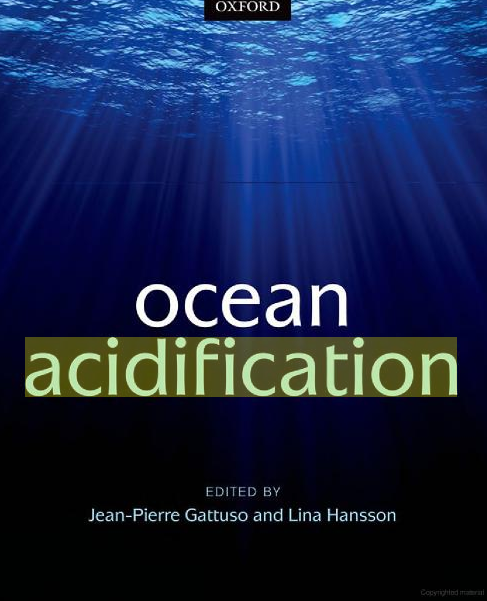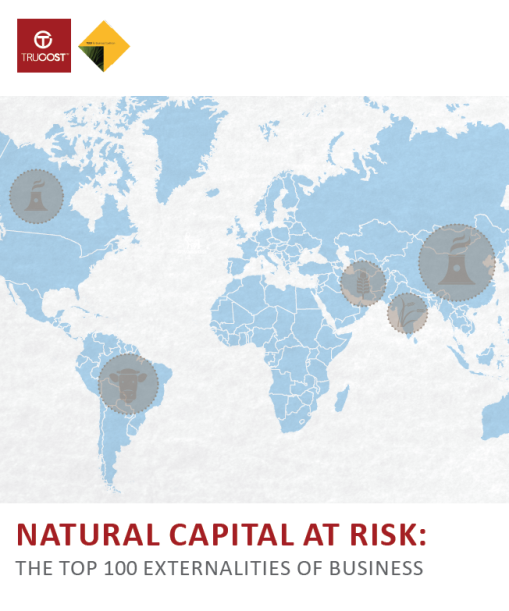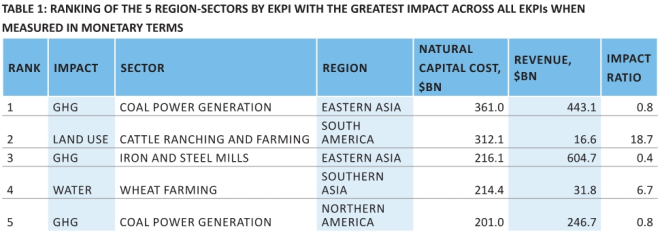Endangered species: Difference between revisions
Siterunner (talk | contribs) No edit summary |
Siterunner (talk | contribs) No edit summary |
||
| Line 1: | Line 1: | ||
| Line 5: | Line 4: | ||
http://www.greenpolicy360.net/w/Extinction | http://www.greenpolicy360.net/w/Extinction | ||
[[File:Human impact on the environment.png | link=http://en.wikipedia.org/wiki/Human_impact_on_the_environment]] | |||
<font color=blue>○ ○ ○ ○ ○ ○ ○ ○ ○</font> | |||
<big><big><big>'''''The 6th'''''</big></big></big> | |||
'''''The 6th Extinction''''' | |||
:''http://www.npr.org/2014/02/12/275885377/in-the-worlds-sixth-extinction-are-humans-the-asteroid'' | |||
''Elizabeth Kolbert is the author of the new book The Sixth Extinction. It begins with a history of the "big five" extinctions of the past, and goes on to explain how human behavior is creating a sixth one — including our use of fossil fuels and the effects of climate change.'' | |||
:''http://www.greenpolicy360.net/w/Extinction'' | |||
<font color=blue>○ ○ ○ ○ ○ ○ ○ ○ ○ ○ ○ ○</font> <font color=green>○ ○ ○ ○ ○ ○ ○ ○ ○ ○ ○ ○</font> | |||
'''''Naomi Klein, "This Changes Everything"''''' [https://www.youtube.com/watch?v=Jdaxehd0cF0 '''''Naomi Klein speaks at the Bioneers Conference'''''] | |||
[http://www.nytimes.com/2014/11/09/books/review/naomi-klein-this-changes-everything-review.html '''''NY Times..."the most momentous and contentious environmental book since 'Silent Spring.'"'''''] | |||
<font color=blue>○ ○ ○ ○ ○ ○ ○ ○ ○ ○</font> <font color=green>○ ○ ○ ○ ○ ○ ○ ○ ○ ○ ○ ○</font> | |||
[[File:Rachel Carson ecology - ecosystem.png]] | |||
[[File:RACHEL CARSON - 1949.jpg]] | |||
; <big><big>''Mass extinctions and ocean acidification''</big></big> | |||
''http://link.springer.com/article/10.1007/s00338-008-0381-8#page-1'' | |||
''Primary causes of mass extinctions are linked in various ways to the carbon cycle in general and ocean chemistry in particular with clear association with atmospheric carbon dioxide levels.'' | |||
''The prospect of ocean acidification is potentially the most serious of all predicted outcomes of anthropogenic carbon dioxide increase.'' | |||
''Acidification has the potential to trigger a sixth mass extinction event and to do so independently of anthropogenic extinctions that are currently taking place.'' | |||
○ | |||
''"Human beings are now carrying out a large scale geophysical experiment of a kind that could not have happened in the past nor be reproduced in the future."'' | |||
''http://www.aip.org/history/climate/Revelle.htm'' | |||
''http://bit.ly/oceans_acidification'' | |||
''http://www.tinybluegreen.com'' | |||
[[File:Ocean acidification Oxford.png]] | |||
<h2>Natural Capital & Externalities</h2> | |||
-- http://en.wikipedia.org/wiki/Externality | |||
-- https://www.greenpolicy360.net/w/Category:Externalities | |||
'''''Grist -- grist for thought...''''' (2013) -- ''The notion of “externalities” has become familiar in environmental circles. It refers to costs imposed by businesses that are not paid for by those businesses. For instance, industrial processes can put pollutants in the air that increase public health costs, but the public, not the polluting businesses, picks up the tab. In this way, businesses privatize profits and publicize costs.'' | |||
''If we take the idea seriously, not just as an accounting phenomenon but as a deep description of current human practices, its implications are positively revolutionary.'' | |||
''[Begin by reviewing] a '''Natural Capital & Externalities Report''' conducted by environmental consultancy '''Trucost''' on behalf of '''The Economics of Ecosystems and Biodiversity (TEEB)''' program sponsored by '''United Nations Environmental Program'''. TEEB asked Trucost to tally up the total “unpriced natural capital” consumed by the world’s top industrial sectors. (“Natural capital” refers to ecological materials and services like, say, clean water or a stable atmosphere; “unpriced” means that businesses don’t pay to consume them.)'' | |||
''It’s a huge task; obviously, doing it required a specific methodology that built in a series of assumptions. (Plenty of details in the report.) But it serves as an important signpost pointing the way to the truth about externalities.'' | |||
''Here’s how those costs break down:'' | |||
''The majority of unpriced natural capital costs are from greenhouse gas emissions (38%), followed by water use (25%), land use (24%), air pollution (7%), land and water pollution (5%), and waste (1%).'' | |||
''So how much is that costing us? Trucost’s headline results are fairly stunning.'' | |||
''§'' | |||
''First, the total unpriced natural capital consumed by the more than 1,000 “global primary production and primary processing region-sectors” amounts to $7.3 trillion a year — 13 percent of 2009 global GDP.'' | |||
''Second... Surprising no one, coal is the enemy of the human race. Trucost compiled rankings, both of the top environmental impacts and of the top industrial culprits.'' | |||
''The biggest single environmental cost? Greenhouse gases from coal burning in China. The fifth biggest? Greenhouse gases from coal burning in North America.'' | |||
''Trucost’s third big finding is the coup de grace. Of the top 20 region-sectors ranked by environmental impacts, none would be profitable if environmental costs were fully integrated. Ponder that for a moment: None of the world’s top industrial sectors would be profitable if they were paying their full freight. Zero.'' | |||
[[File:Nsnewlogo 2014.jpg | link=http://www.newstatesman.com/business/2013/04/paying-environmental-damage-they-do-would-render-global-industries-unprofitable-ove]] | |||
[http://www.newstatesman.com/business/2013/04/paying-environmental-damage-they-do-would-render-global-industries-unprofitable-ove '''''Paying for the environmental damage they do would render global industries unprofitable overnight: The externalities are massive'''''] | |||
''Coal power generation in Eastern Asia, which generates revenues of $443.1bn, has a natural capital cost of '''$452.8bn''' (that's unpriced natural capital – the report already takes into account the various ways in which industries are forced to price in their externalities), largely due to greenhouse gases. Cattle ranching in South America, with revenues of $16.6bn, has capital cost of $353.8bn, due to the unpriced cost of land use. And so on. | |||
You can quibble the figures – and doubtless many will – but what is clear is they are large. Really, really large. Many of the biggest industries in the world can only exist because they don't have to pay the true environmental cost of what they do. The word "unsustainable" is thrown around too much these days, but it seems to fit here.'' | |||
[[File:Trucost Top Externalities for Business FOC Report 2013.png | link=http://www.greenpolicy360.net/mw/images/NATURAL_CAPITAL_AT_RISK_-_TOP_100_EXTERNALITIES_OF_BUSINESS_-_TEEB_Report_-_2013.pdf]] | |||
<h2>Natural Capital at Risk: The Top 100 Externalities of Business</h2> | |||
http://www.trucost.com/published-research/99/natural-capital-at-risk-the-top-100-externalities-of-business | |||
http://www.greenpolicy360.net/w/Category:TEEB | |||
http://www.greenpolicy360.net/mw/images/NATURAL_CAPITAL_AT_RISK_-_TOP_100_EXTERNALITIES_OF_BUSINESS_-_TEEB_Report_-_2013.pdf | |||
[[File:Unep-top-five-industrial-sectors-by-environmental-impactsjpg.jpg]] | |||
[[File:Unep-top-five-environmental-impacts.jpg]] | |||
Revision as of 15:40, 21 July 2017
https://en.wikipedia.org/wiki/Endangered_species
http://www.greenpolicy360.net/w/Extinction
○ ○ ○ ○ ○ ○ ○ ○ ○
The 6th
The 6th Extinction
Elizabeth Kolbert is the author of the new book The Sixth Extinction. It begins with a history of the "big five" extinctions of the past, and goes on to explain how human behavior is creating a sixth one — including our use of fossil fuels and the effects of climate change.
○ ○ ○ ○ ○ ○ ○ ○ ○ ○ ○ ○ ○ ○ ○ ○ ○ ○ ○ ○ ○ ○ ○ ○
Naomi Klein, "This Changes Everything" Naomi Klein speaks at the Bioneers Conference
NY Times..."the most momentous and contentious environmental book since 'Silent Spring.'"
○ ○ ○ ○ ○ ○ ○ ○ ○ ○ ○ ○ ○ ○ ○ ○ ○ ○ ○ ○ ○ ○
- Mass extinctions and ocean acidification
http://link.springer.com/article/10.1007/s00338-008-0381-8#page-1
Primary causes of mass extinctions are linked in various ways to the carbon cycle in general and ocean chemistry in particular with clear association with atmospheric carbon dioxide levels.
The prospect of ocean acidification is potentially the most serious of all predicted outcomes of anthropogenic carbon dioxide increase.
Acidification has the potential to trigger a sixth mass extinction event and to do so independently of anthropogenic extinctions that are currently taking place.
○
"Human beings are now carrying out a large scale geophysical experiment of a kind that could not have happened in the past nor be reproduced in the future."
http://www.aip.org/history/climate/Revelle.htm
http://bit.ly/oceans_acidification
Natural Capital & Externalities
-- http://en.wikipedia.org/wiki/Externality
-- https://www.greenpolicy360.net/w/Category:Externalities
Grist -- grist for thought... (2013) -- The notion of “externalities” has become familiar in environmental circles. It refers to costs imposed by businesses that are not paid for by those businesses. For instance, industrial processes can put pollutants in the air that increase public health costs, but the public, not the polluting businesses, picks up the tab. In this way, businesses privatize profits and publicize costs.
If we take the idea seriously, not just as an accounting phenomenon but as a deep description of current human practices, its implications are positively revolutionary.
[Begin by reviewing] a Natural Capital & Externalities Report conducted by environmental consultancy Trucost on behalf of The Economics of Ecosystems and Biodiversity (TEEB) program sponsored by United Nations Environmental Program. TEEB asked Trucost to tally up the total “unpriced natural capital” consumed by the world’s top industrial sectors. (“Natural capital” refers to ecological materials and services like, say, clean water or a stable atmosphere; “unpriced” means that businesses don’t pay to consume them.)
It’s a huge task; obviously, doing it required a specific methodology that built in a series of assumptions. (Plenty of details in the report.) But it serves as an important signpost pointing the way to the truth about externalities.
Here’s how those costs break down:
The majority of unpriced natural capital costs are from greenhouse gas emissions (38%), followed by water use (25%), land use (24%), air pollution (7%), land and water pollution (5%), and waste (1%).
So how much is that costing us? Trucost’s headline results are fairly stunning.
§
First, the total unpriced natural capital consumed by the more than 1,000 “global primary production and primary processing region-sectors” amounts to $7.3 trillion a year — 13 percent of 2009 global GDP.
Second... Surprising no one, coal is the enemy of the human race. Trucost compiled rankings, both of the top environmental impacts and of the top industrial culprits.
The biggest single environmental cost? Greenhouse gases from coal burning in China. The fifth biggest? Greenhouse gases from coal burning in North America.
Trucost’s third big finding is the coup de grace. Of the top 20 region-sectors ranked by environmental impacts, none would be profitable if environmental costs were fully integrated. Ponder that for a moment: None of the world’s top industrial sectors would be profitable if they were paying their full freight. Zero.
Coal power generation in Eastern Asia, which generates revenues of $443.1bn, has a natural capital cost of $452.8bn (that's unpriced natural capital – the report already takes into account the various ways in which industries are forced to price in their externalities), largely due to greenhouse gases. Cattle ranching in South America, with revenues of $16.6bn, has capital cost of $353.8bn, due to the unpriced cost of land use. And so on.
You can quibble the figures – and doubtless many will – but what is clear is they are large. Really, really large. Many of the biggest industries in the world can only exist because they don't have to pay the true environmental cost of what they do. The word "unsustainable" is thrown around too much these days, but it seems to fit here.







